Tree hydrangea (lat. Hydrangea arborescens) is an unpretentious and most frost-resistant species native to North America. A feature of the culture is a long flowering period, which begins in mid-summer and ends in late autumn, as well as a lush and spreading fast-growing crown.
|
Every year the shoots of the bush become larger by about forty to fifty centimeters. This hardy variety of hydrangea is considered one of the most spectacular and beloved by gardeners for its high decorative qualities. |
| Content:
|
The upright growing culture consists of numerous flexible shoots with a slightly pubescent surface, large oval leaves of bright green and gray shades up to twenty centimeters long, spherical white inflorescences with a diameter of fifteen to twenty-five centimeters. Initially, the buds are colored light green, and as small flowers bloom they turn into snow-white, pinkish or cream inflorescences.
The average height of tree hydrangea is one and a half to two and a half meters. Based on this species, many new varieties have been bred, which differ in terms and duration of flowering, color and size of inflorescences, resistance to cold, diseases and pests.
Rules for planting tree hydrangea
Garden hydrangea will delight with its unique beauty in every season, but only if all planting and care rules are followed, as well as with the right location and soil preparation. This article provides all the detailed information about growing tree hydrangea.
Where is the best place to plant hydrangea?
Choosing a place to plant tree hydrangea should be carefully and thoughtfully, taking into account all the requirements of the plant.Culture has a negative attitude towards transplantation, so the place must be ideal from the beginning. This means that neighboring crops that consume a lot of moisture will be at a distance of at least two or three meters. The sun will only shine on hydrangeas for two to three hours in the morning and evening hours. Sudden gusts of wind and drafts are not allowed.
It is also necessary to take into account the local climate when choosing a planting site. For example, in the northern regions, seedlings are placed in a well-lit area, and in warm southern conditions - only in partial shade.
Interesting! The color of the inflorescences will become more saturated if the soil is periodically shed with a special acidifying solution based on aluminum sulfate. Ten liters of water will require thirty grams of the substance.
Soil preparation
An unpretentious shrub takes root and grows on any soil, but only a special soil mixture affects the true beauty and attractiveness of hydrangea. The optimal composition is leaf soil (two parts), peat, coarse river sand (one part each) and rotted humus (two parts).
Fertile, drained loamy areas with a high level of acidity will also be favorable. The structure of the soil should be light, loose, with good air and water permeability. Before planting hydrangeas, slightly acidic soils are diluted with fine sawdust, brown peat or coniferous soil.
|
The depth and width of the planting hole depends on the size of the root system of the seedling and can range from fifty to seventy centimeters. A drainage layer is laid on the bottom. |
On a note! Direct sunlight and bright lighting throughout the day lead to slower growth and a reduction in the size of the inflorescences.In dense shade, crops become less lush, bloom for a short time, and often get sick.
Planting tree hydrangea in open ground in spring
Preparing the planting hole
The distance between hydrangea seedlings depends on the purpose of cultivation. For example, for hedges, bushes are planted closer to each other, and solo plants are placed further away. The optimal distance is from one hundred twenty centimeters to two and a half meters.
The bottom of each pit is covered with drainage material (expanded clay or broken red brick), watered abundantly with two to three buckets of settled water, then a nutritious soil mixture is laid to approximately one third of the total volume.
On a note! To maintain constant moderate moisture in the soil, it is recommended to add a small amount of hydrogel to the planting holes.
Preparation of seedlings
Before planting, seedlings with an open root system are placed in a container with a weak manganese solution at room temperature; with closed roots, the earthen ball is moistened.
Planting process and subsequent care
Young plants are placed in the center of the prepared hole, soil is gradually filled in, it is carefully compacted, watered abundantly and, if necessary, more soil is added. The root collar is left flush with the soil surface.
|
After the soil has been compacted and settled after absorbing irrigation water, the tree trunk areas are mulched. |
The most suitable mulching material for hydrangeas would be pine sawdust or shavings, compost, humus, straw, expanded clay and peat. The thickness of the protective layer is about fifteen centimeters.
How to care for hydrangea
Irrigation regime - basic requirements
Lack and excess of moisture are equally harmful and even dangerous for shrub crops. Lack of water is the path to wilting and slow growth, and excessive watering is the slow death of the plant due to rotting of the roots. The moisture-loving tree hydrangea has its own requirements for this procedure.
|
For irrigation, it is advisable to use rainwater or water that has stood for 24 hours from the tap. |
- The optimal water temperature is from twenty to twenty-five degrees Celsius.
- Wet procedures are recommended to be carried out in the early morning or late evening hours.
- The frequency of watering depends on the amount of natural precipitation. Usually one watering per week in a volume of twenty to thirty liters per bush is sufficient. During hot and dry periods, another additional watering will be required.
- It is not recommended to use sprinkling, as the inflorescences saturated with water become heavy and the shoots may be damaged under their weight.
- With the arrival of autumn, watering is reduced to twice a month.
Attention! You can protect shrubs from generous and prolonged autumn rainfall with the help of a specially constructed canopy with a “roof” made of dense polyethylene, which will extend the flowering period for some period of time.
Application of fertilizing and fertilizers
For active growth and lush flowering, plants need timely fertilizing and additional nutrients. In the first year, young bushes do not need fertilizers, because they were placed in the soil or planting hole when planting. In the future, it is recommended to maintain hydrangea at least three times a season.
|
Fertilizers for hydrangea |
Feeding options:
- in the first half of April, when the first shoots appear, add a mineral complex or a mixture of thirty grams of superphosphate and potassium sulfide, twenty grams of urea;
- During the period of bud formation, mineral and organic fertilizers are used. For example, mullein infusion (in a ratio of one to ten) or superphosphate with potassium sulfate (70 and 40 grams, respectively, per square meter);
- during the period of active flowering (late summer), the bushes are fed with rotted manure or compost;
- to strengthen the immune system, the crops are watered with a manganese solution once a month;
- To restore the acid-base balance in the soil, it is recommended to use a solution of two liters of water and two grams of iron sulfate.
Rules and timing of pruning
Tree hydrangea recovers very quickly after pruning and blooms even with a small number of shoots. The most favorable time for carrying out this procedure is spring (before the buds open), but in the fall the shrubs get rid of wilted inflorescences and prepare them for wintering. Regular “haircuts” begin when shrub crops are three years old.
|
Trimming scheme |
- In spring, hydrangeas are given the correct decorative shape and removed from dead and damaged branches.
- The shoots emerging from the middle of the crown are pruned by a few centimeters, and the outer branches are shortened a little more.
- Starting from the age of five, old shoots must be removed. Every seven to eight years they are cut back to ground level, thereby rejuvenating the plant.
- In the fall, you should pay attention to the growing branches; they must be removed, but the young shoots are left. The main branches are shortened to two to four pairs of buds.
- In the spring, last year's shoots are shortened by a third, and small and thin shoots that are not involved in future flowering are cut off completely. They only take a large amount of nutrients from the bush.
Important! In the first three years, only sanitary pruning is performed if necessary. Seedlings need to be given time to strengthen and adapt to a new location.
Loosening and mulching
Within a radius of sixty to seventy centimeters from the bush, it is recommended to regularly loosen the soil and weed it from weeds. When a dry crust appears on the surface, the hydrangea root system does not receive enough water and air. The soil is loosened once or twice a month to a depth of five to six centimeters.
|
If the tree trunk circle is covered with a mulch layer, then the soil is always in a moderately moist state and does not need loosening and weeding. |
Mulch can be made from one material or several. The area near the bushes is mulched with compost or a mixture of compost and pine sawdust. Each plant will require about one bucket of the mixture. The thickness of the protective layer is about six centimeters. Before applying mulch, it is necessary to loosen the soil.
Planting seedlings with a closed root system in summer
In August, you can plant tree hydrangea seedlings with a closed root system. The earthen ball is soaked with moisture so that the bush can be easily removed from the planting container.
The diameter and depth of the planting hole for a three- or four-year-old seedling is at least fifty centimeters, for seedlings aged one and two years – about thirty centimeters.
|
The container with the young plant is turned over, the seedling is carefully removed, trying not to disturb the integrity of the earthen clod, and it is placed in the center of the hole. |
The hole is filled to the brim with soil, carefully compacted and watered abundantly. After the irrigation water has been absorbed, a mulch layer is applied to the tree trunk area.
Planting tree hydrangea in autumn
- Only those seedlings that have well-developed and strong roots are suitable for autumn planting. The average height is from fifty to eighty centimeters.
- Young bushes planted in autumn become hardened and hardy, more resistant to diseases and pests. The very next season they will give their first flowering.
- Planting dates vary depending on the climate of the region.
- In southern latitudes, hydrangea is planted from early September to late October.
- In Moscow, the Moscow region and central Russia - in the first half of September.
- In Siberia and the Urals, autumn planting of hydrangeas is not carried out. It can be carried out in the last two weeks of summer, but only if the seedling has a strong trunk, mature branches and developed roots.
- For young bushes planted in autumn, it is necessary to build a reliable winter shelter.
How and when is it better to replant hydrangea?
Preparations for transplantation begin in the fall. At the border of the tree trunk circle, dig a shallow trench, fill it with compost and regularly (before frost) water it abundantly. Such preparation will help the bushes more easily endure stress when changing habitat.
|
Hydrangea bush transplanted to a new location |
The replanting process can begin as soon as the snow melts. In spring, all shoots are shortened by one third, and the soil under the bush is moistened.Trying to keep the earthen lump on the root part, the plant is removed from the ground. When the coma is destroyed, it is recommended to cut off the shoots by seventy percent, this will help the crops to quickly take root in the new area. Hydrangea is planted, shaded and moderate soil moisture is maintained. New shoots will begin to appear in approximately three to four weeks. This will be the signal for the first feeding.
Hydrangea propagation
In garden conditions, tree hydrangea can be propagated in five different ways.
-
Seeds
No preliminary preparation of the seed is required. The optimal planting time is the second half of February. Seeds are sown in a nutritious, loose and light substrate with moderate humidity. The containers chosen are small in size, about fifteen centimeters deep.
|
After the formation of three to four full-fledged leaves, the plants are planted in individual pots. |
The crops are sprayed with a fine sprayer and covered with a transparent film. After two and a half to three weeks, the first shoots will appear. Plants can be replanted in an open area only after two years. The height of a seedling ready for garden conditions is from thirty to forty centimeters.
-
Cuttings
Professional gardeners most often use cuttings to obtain new plants. If there is a healthy mature shrub in the garden, then there will be no problems with this propagation method. In early July, when the buds are just beginning to open, you need to select healthy shoots and cut cuttings.
|
In the upper part of the green cuttings, the leaves are cut in half, and in the lower part they are completely removed. The length of each cutting is from ten to twenty centimeters. |
The cuttings are placed for one to two hours in a container with a growth stimulator, after which they are planted in a sand-peat substrate or in a box with wet sand.
Caring for future seedlings consists of regular moistening and shading at midday from direct sun. Greenhouse cuttings will require constant ventilation.
Important! It is recommended to cut cuttings in the early morning, when the bush is covered with dew and the shoots are saturated with moisture.
-
By layering
In the spring, before the buds open, it is necessary to carry out shallow digging around the mature shrub, and then make grooves for laying layering about fifteen centimeters deep.
|
The branches that are the most flexible and lowest to the ground are cleared of leaves, placed in prepared furrows, secured with wire staples and sprinkled with light soil so that the top of the layer remains above the surface. |
Until late autumn, regular watering is carried out and soil is added as necessary. It is better to leave the cuttings that have taken root over the summer to overwinter together with the mother plant, and in the spring, dig them up and plant them in permanent places.
-
Offspring
With the arrival of autumn, the resulting shoots can be separated from the mature bush. To do this, the top layer of soil under the plant is carefully removed and the shoots are separated using a sterile knife. For two years they are grown in individual pots, and after final ripening they are transferred to the garden plot.
Important! After separating the shoots, the cut areas must be sprinkled with charcoal or activated carbon.
-
Dividing the bush
Dividing the bush into several parts is not difficult, the main thing is not to damage the rhizome when removing the plant from the ground.The shrub is first watered abundantly, carefully pulled out, the root part is washed under running water and inspected for diseases. All dried, rotten and damaged roots are removed. The hydrangea is divided into several bushes, the cut areas are treated with a disinfectant solution and planted in a new place. This propagation method is recommended for use in early spring.
Wintering hydrangea
Tree hydrangea is the most winter-hardy species that perfectly tolerates the cold autumn-winter period, but it is still necessary to prepare it for this. First you need to prune faded inflorescences and thin young branches that definitely will not survive the winter.
|
Plants are hilled with peat or compost, approximately two to three buckets for each crop. The optimal time for this is the end of October or the beginning of November. Low young bushes are covered with spruce branches. |
Then you need to build the right shelter. In southern and temperate climates, much attention is paid to insulating the root part, especially for shrubs that have not reached three years of age.
In the northern regions, coniferous litter is poured into tree trunk circles, then the branches are tied with twine and the plants are covered with boards.
Diseases and pests
Tree hydrangea gets sick very rarely and most often due to improper care. Fungal infections appear with a sharp drop in air temperature, high humidity and a large excess of moisture in the soil. Leaves and flowers are the first to suffer. Bordeaux mixture, Fundazol, Vitaros or copper oxychloride will help solve this problem.
The most common pests of hydrangea are aphids and spider mites.For prevention purposes, it is recommended to periodically spray with herbal infusions and soap solutions. To combat existing harmful insects, plants are treated with Akarin, Fitoverm, Actellik or Thiofis. Folk recipes also have a good effect - for example, spraying with garlic broth or garlic soap solution.
Conclusion
When choosing a tree hydrangea variety for planting in your garden, be guided not only by its external characteristics, but also by the plant’s resistance to the local climate. Only in favorable conditions will the crop show all its beauty and provide long-lasting flowering.
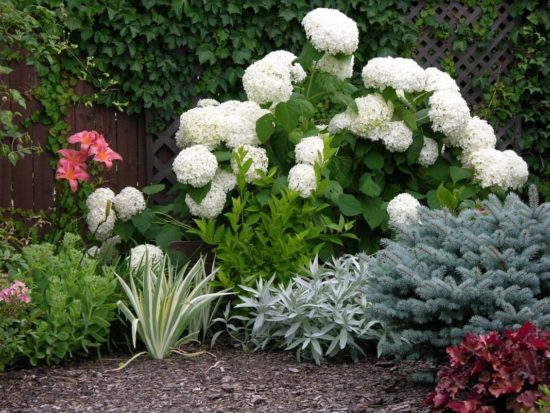
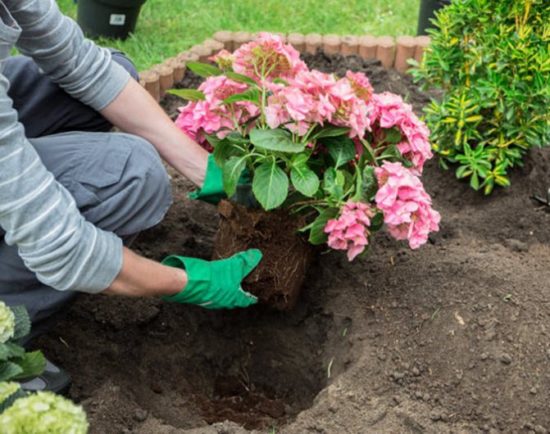
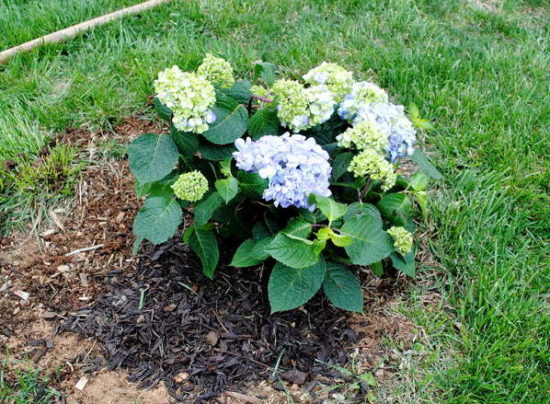
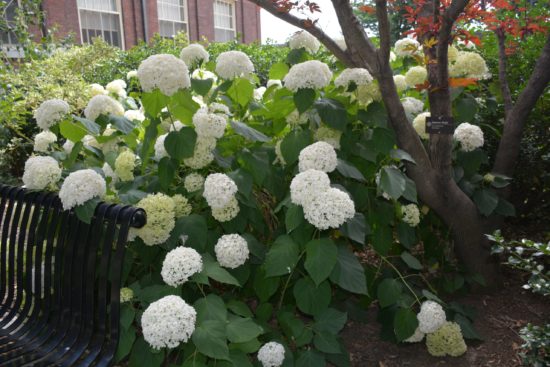
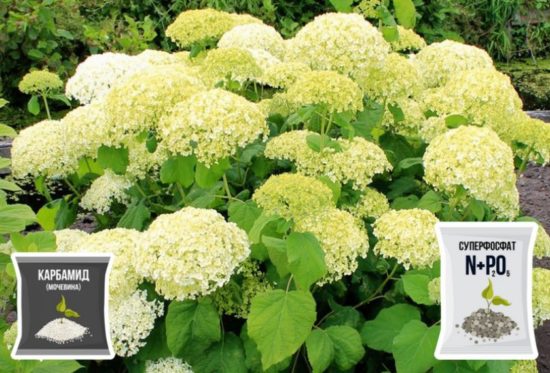
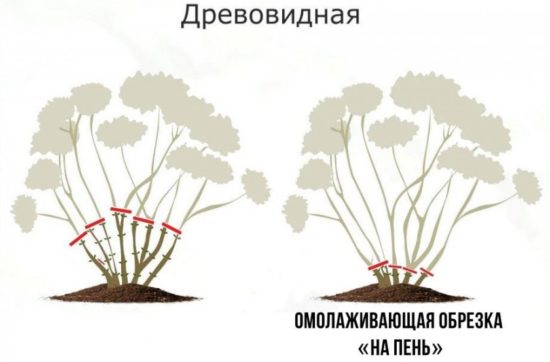


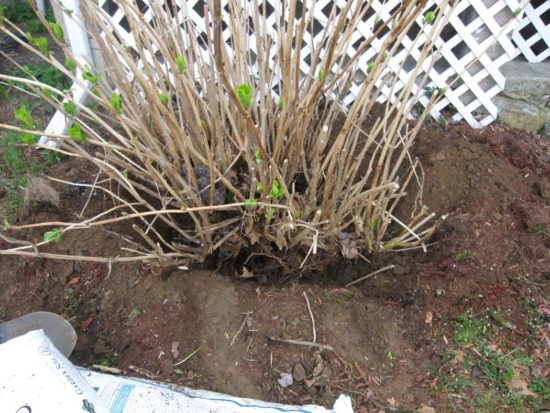
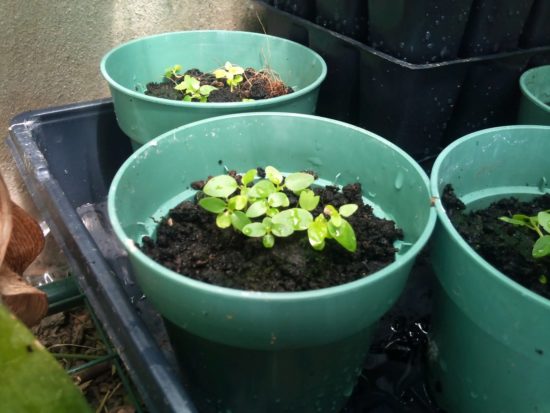
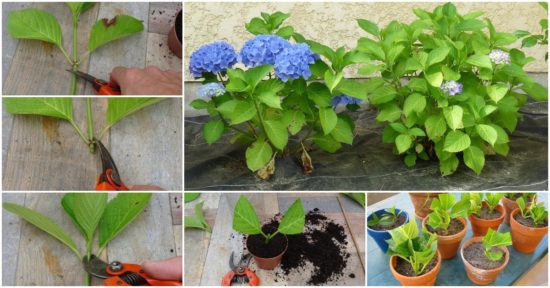
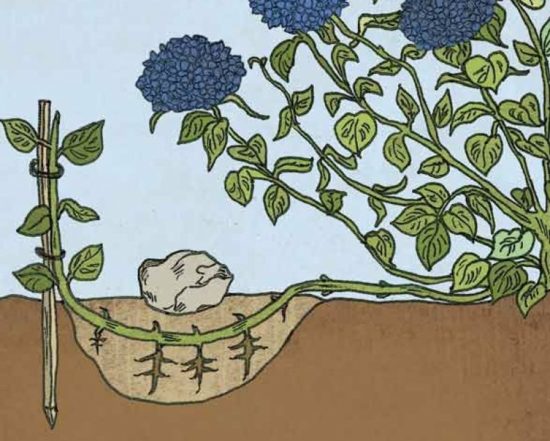
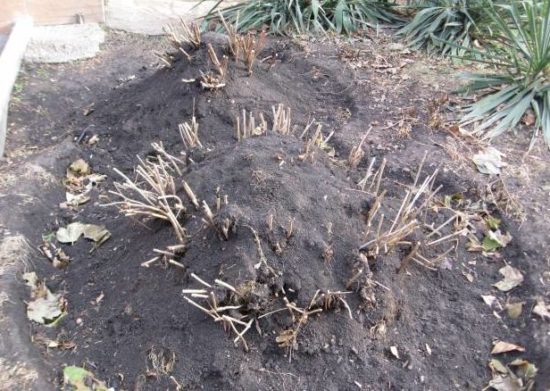

 CUCUMBERS NEVER GET SICK, I'VE BEEN USING ONLY THIS FOR 40 YEARS! I SHARE A SECRET WITH YOU, CUCUMBERS ARE LIKE THE PICTURE!
CUCUMBERS NEVER GET SICK, I'VE BEEN USING ONLY THIS FOR 40 YEARS! I SHARE A SECRET WITH YOU, CUCUMBERS ARE LIKE THE PICTURE! You can dig a bucket of potatoes from each bush. Do you think these are fairy tales? Watch the video
You can dig a bucket of potatoes from each bush. Do you think these are fairy tales? Watch the video
 How our fellow gardeners work in Korea.There is a lot to learn and just fun to watch.
How our fellow gardeners work in Korea.There is a lot to learn and just fun to watch. Eye trainer. The author claims that with daily viewing, vision is restored. They don't charge money for views.
Eye trainer. The author claims that with daily viewing, vision is restored. They don't charge money for views. A 3-ingredient cake recipe in 30 minutes is better than Napoleon. Simple and very tasty.
A 3-ingredient cake recipe in 30 minutes is better than Napoleon. Simple and very tasty. Therapeutic exercises for cervical osteochondrosis. A complete set of exercises.
Therapeutic exercises for cervical osteochondrosis. A complete set of exercises. Which indoor plants match your zodiac sign?
Which indoor plants match your zodiac sign? What about them? Excursion to German dachas.
What about them? Excursion to German dachas.
Tree hydrangea looks great both in single and group plantings. It harmonizes amazingly with clematis, lilies and roses. The plant is used to create tree and shrub compositions in combination with coniferous plants, and also as a hedge that does not require formative pruning. No matter how you decide to use tree hydrangea, it will undoubtedly decorate your area. Gentian: cultivation and care in the garden, types and varieties Hydrangea paniculata: planting, care, description of varieties
Tree hydrangea in open ground requires regular and abundant watering, especially during the hot, dry period.In addition, you will need to loosen the soil in the tree trunk and remove weeds, add fertilizer to the soil, prune the hydrangea and protect it from diseases and pests.
The culture is distinguished by its rapid growth, love of moisture, demanding soil composition and winter hardiness. This species tolerates lime in the soil more easily than other hydrangeas.